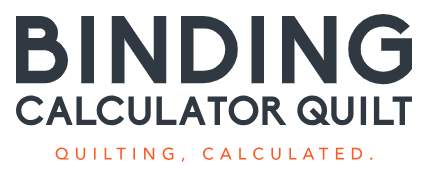Quilt Scale / Resize Calculator
Original Pattern
Scaling Options
100% = original size, 150% = 1.5× larger, 50% = half size
Both block sizes and count will be scaled proportionally
About Quilt Pattern Scaling
Why Scale a Quilt Pattern?
Sometimes you fall in love with a quilt pattern but need it in a different size. Maybe that twin-sized pattern would be perfect as a baby quilt, or you want to upsize a throw pattern to fit a queen bed. Our Quilt Scale Calculator makes pattern resizing simple and accurate.
Scaling affects every aspect of your quilt: block sizes, number of blocks, sashing widths, border widths, and total fabric requirements. This calculator handles all these calculations automatically, ensuring your scaled pattern maintains the same proportions and visual appeal as the original.
Three Ways to Scale
1. Scale by Percentage
The most flexible method. Enter any percentage to scale your pattern. Use 150% to make it 1.5 times larger, 75% to make it three-quarters the size, or any custom percentage that fits your needs.
2. Scale to Target Size
Have a specific finished size in mind? Enter your target dimensions and the calculator will determine the exact scale factor needed. You can specify one or both dimensions - if you enter both, the pattern will be scaled proportionally to fit.
3. Scale to Preset Size
Choose from standard quilt sizes (baby, throw, twin, full, queen, king) and the calculator will automatically scale your pattern to fit. Perfect for quickly converting patterns to common bed sizes.
Block Count Options
When scaling a quilt pattern, you have two approaches for handling block count:
Keep Original Block Count
Only the block sizes change, keeping the same number of blocks as the original pattern. For example, a 5×5 grid stays a 5×5 grid, but with larger or smaller blocks. This preserves the pattern's complexity and layout.
Scale Block Count Proportionally
Both block sizes and block count scale proportionally based on area. If you scale up 150%, you'll have approximately 2.25× as many blocks (1.5² = 2.25). This maintains the same visual density and block-to-quilt-size ratio as the original.
Understanding the Results
The calculator provides a side-by-side comparison showing:
- Quilt dimensions - Original and scaled finished sizes
- Block sizes - How large each block needs to be cut
- Block count - Total number of blocks needed
- Sashing widths - Scaled sashing strip dimensions (if applicable)
- Border widths - Total border width after scaling
- Fabric estimates - Approximate yardage change and total needed
Important Considerations
Fabric Pattern Scale
When scaling a quilt up significantly, consider how fabric prints will look. Large-scale prints may overwhelm smaller blocks, while tiny prints might get lost in very large blocks. Test your fabric choices before cutting.
Round to Convenient Measurements
The calculator provides precise measurements, but you may want to round to convenient fractions for easier cutting. For example, round 10.37" to 10.5" or 10.25" depending on what works better with your rulers and cutting tools.
Verify Pattern Complexity
Scaling down can make complex piecing very small and difficult. Scaling up can make simple patterns look sparse. Consider whether the pattern's complexity is appropriate for your target size.
Next Steps After Scaling
- Calculate detailed fabric requirements - Use our Fabric Calculator with your scaled dimensions for precise yardage of each fabric
- Verify your layout - Use the Block Layout Calculator to ensure your scaled blocks fit properly
- Calculate borders and sashing - Use the Border & Sashing Calculator for detailed cutting instructions
- Plan your backing - Use the Backing & Batting Calculator to determine backing fabric needs
- Estimate project time - Use the Time Estimator to plan your project timeline
Tips for Successful Pattern Scaling
- Always make a test block at your scaled size before cutting all your fabric
- Consider adjusting seam allowances if scaling to very small sizes (under 3" blocks)
- Check that your scaled block sizes work with your cutting tools and rulers
- When scaling significantly, consider whether your backing fabric width will work
- Document your scaled measurements clearly for reference during construction
- Add a bit of extra fabric when scaling up - larger quilts have more room for cutting errors
